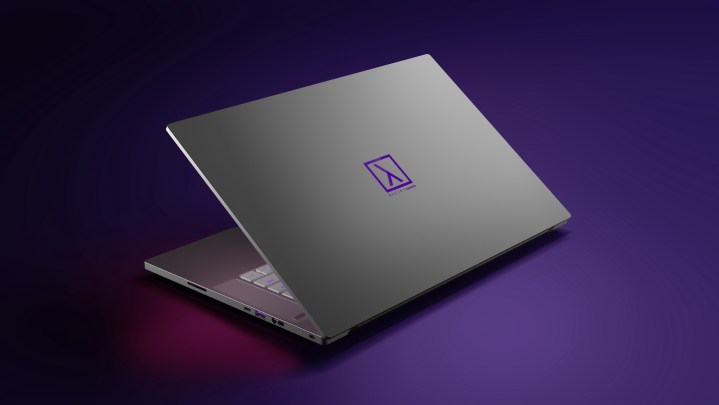The new Tensorbook may look like a gaming laptop, but it’s actually a notebook that’s designed to supercharge machine learning work.
The laptop’s similarity to popular gaming systems doesn’t go unnoticed, and that’s because it was designed by Lambda through a collaboration with Razer, a PC maker known for its line of sleek

And the gaming chops are definitely there — this notebook separates itself from other machine learning laptops by coming with powerful hardware, including a dedicated Nvidia GeForce RTX 3080 Max-Q graphics processor, making it equally as powerful for gaming.
Along with optional support for dual-booting into Windows, the Tensorbook could be the ideal notebook for developers to code, work, and play without having to own a separate system to game.
In addition to the elevated hardware specifications, the Tensorbook comes preloaded with Linux, Lambda’s deep learning software, and the Lambda GPU Cloud, which according to the companies, gives engineers the tools and performance they need to create, train, and test deep learning models locally.
“Most ML engineers don’t have a dedicated GPU laptop, which forces them to use shared resources on a remote machine, slowing down their development cycle.” said Stephen Balaban, co-founder and CEO of Lambda, in a blog post. “When you’re stuck SSHing into a remote server, you don’t have any of your local data or code and even have a hard time demoing your model to colleagues. The Razer x Lambda Tensorbook solves this. It’s pre-installed with PyTorch and TensorFlow and lets you quickly train and demo your models — all from a local GUI interface. No more SSH!”

On the hardware front, the 15.6-inch Lambda Tensorbook comes with a display resolution of 2560 x 1440 pixels and a refresh rate of 165Hz, an Intel Core i7-11800 CPU with eight cores of compute performance coupled with Nvidia’s GeForce RTX 3080 Max-Q GPU, 64GB of DDR4 memory, 2TB of solid-state storage, Thunderbolt 4 support, and a 1080p webcam — all in a very slim 4.4-pound unibody aluminum case.
You wouldn’t be mistaken if you thought the design of the Tensorbook resembles Razer’s iconic Blade laptop, because it does. This notebook swaps out Razer’s matte black color way for a lighter silvery gray hue.

This makes the Tensorbook’s hardware powerful enough as a high-end mobile gaming system, but pure gamers will likely want to stick to Razer’s all-black notebooks. The Tensorbook’s primary Ubuntu Linux 20.04 LTS build may not be optimum for PC games, though you can choose to upgrade to a configuration that dual-boots into Windows if you need. Along with the Lambda stack, the companies promise one year of engineering support through Lambda as well.
The new Razer x Lambda Tensorbook is now available for $3,499. A comparable Razer Blade 15 Advanced model configured with an Intel Core i6-11800H, GeForce RTX 3080, 32GB of RAM, and 1TB solid-state drive with a 15.6-inch QHD display and 240Hz refresh retails for $3,099. With Lambda’s pricing for the Tensorbook, it looks like there isn’t much of a price premium on the collaboration, if any at all, given you’re getting more RAM and a larger solid-state drive.
Editors' Recommendations
- We may have just learned how Apple will compete with ChatGPT
- This app just got me excited for the future of AI on Macs
- Photoshop AI thinks ‘happiness’ is a smile with rotten teeth
- Meta made DALL-E for video, and it’s both creepy and amazing
- I pitched my ridiculous startup idea to a robot VC


